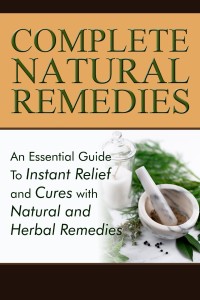In order to understand what the flu does, you first have to learn about the differences between bacteria and viruses. Both of these minute germs, bacteria and viruses, are able to invade the body and cause specific types of symptoms based on the reaction the body has to the changes the germ makes. In the last 50 years scientists have been able to combat the growth of bacteria through the manufacture and production of antibiotics. These antibiotics were once thought to make an impact on individuals who also suffered from viral infections, but today researchers and doctors know that taking antibiotics when an individual has a viral infection only increases the chance that they will develop a bacterial infection. (1,2)
The flu is an illness which is caused by a virus. This virus resides and multiplies in the back of the throat. Although the mechanism of transmission and the way the virus grows are the identical, the flu is not the same as the common cold. This is because the viruses are different. The common cold will have milder, yet similar, symptoms to the flu and the cold is less likely to cause serious complications.
The flu is a contagious respiratory illness that is caused by a virus and can cause mild to severe effects in the body. Sometimes the illness can be fatal. According to the Center for Disease Control and Prevention the best way to prevent getting seasonal flu is to get a vaccination each and every year.

According to the CDC statistics, between five and 20% of the population gets the flu on an annual basis and more than 200,000 people are hospitalized. Each year approximately 360 people die from flu related causes. The majority of these individuals who suffer mortality are children, older individuals and people who have health conditions which negatively impact their immune system, such as asthma, diabetes or heart disease. (3)
Fortunately, research continues to try to identify the methods of transmission and the growth process of the virus inside the body. New information is reaching the public through media coverage about the types of different natural products which can be used in order to prevent or treat the symptoms of flu.
Resources:
(1) Centers for Disease Control and Prevention: Get Smart: Know When Antibiotics Work
http://www.cdc.gov/getsmart/antibiotic-use/know-and-do.html
(2) MayoClinic.com: Antibiotics: Misuse Puts You and Others At Risk
http://www.mayoclinic.com/health/antibiotics/FL00075
(3) Center for Disease Control and Prevention: Key Facts about Influenza (Flu) and Flu Vaccine
http://www.cdc.gov/flu/keyfacts.htm
(4) The American Journal of Clinical Nutrition: Randomized Trial of Vtiamin D Supplementation to Prevent Seasonal Influenza A in Schoolchildren
http://www.ajcn.org/content/early/2010/03/10/ajcn.2009.29094.abstract
(5) Mercola.com: The vitamin Which Can Cut Your Flu Risk Nearly In Half
(6) The Vitamin D Council: H1N1 Flu and Vitamin D
http://www.vitamindcouncil.org/news-archive/2009/h1n1-flu-and-vitamin-d/
| Advertisement | |
 |
|


Leave a Reply